
It all started back in 2009 with the introduction of the Samsung Hummingbird S5PC110, later named Exynos 3 single. Exynos 3 single was the first Exynos chipset by Samsung launched under Exynos branding, manufactured using the 45nm process paired with the powerful POWERVR SGX 3D graphics engine. The Exynos 3 single publicized by Samsung as the first 1.0GHz mobile processor came as a flash of light that immediately grabbed mobile Industry attention. It was powerful, efficient, and cheap.
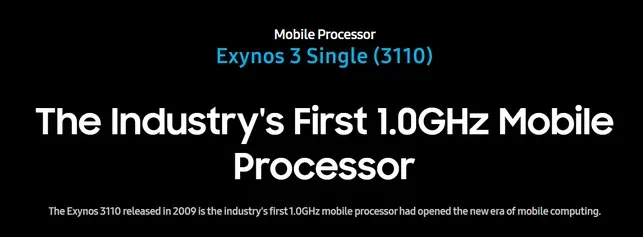
Samsung Galaxy S was the first smartphone with an Exynos 3 single processor. But Exynos 3 soon gained its popularity and was eventually used in many devices like the galaxy tab, Samsung wave series smartphone, and the Google Nexus S. With Exynos 3 single, Samsung completely blew away the Snapdragon offering - Snapdragon QSD8650A.
It was 2011 when Samsung decided to go multicore with its Exynos 4 Dual SoC. Exynos 4 Dual was build using the same manufacturing process 45nm, but it came with an improved, more powerful Mali-400 MP4 GPU, capable of recording Full HD videos at 30fps. In 2012, Samsung launched a new variant of Exynos 4 Dual built around a more efficient 32nm process. The use of the 32nm process drastically improved the efficiency of the device carrying it, more raw power, and an improved battery.
Samsung launched its first quad-core chipset in mid-2012 named Exynos 4 Quad 4412. Exynos 4 quad was the first-ever quad-core mobile chipset. Built around 32 nm process, it featured Cortex®-A9 1.4/1.6 GHz cores.
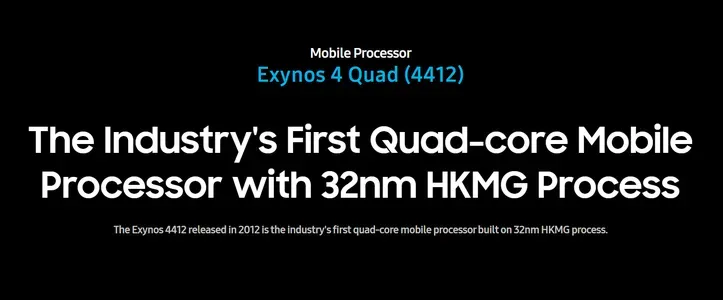
But Soon after the Samsung launched its quad-core Exynos 4, Qualcomm launched its own quad-core S4 Pro processor and the fight between Exynos and snapdragon for the title of fastest android processor begun.
By the time Exynos 4 Quad arrived, Samsung was already selling two variants of smartphones in the world. Snapdragon for the USA and Exynos for the rest of the world.
Snapdragon 4 Pro was Exynos 4 Quad equivalent in 2012, but the benchmark results were telling a different story. In almost every benchmark, S4 Pro had a lead over Exynos, and that was the first time when people around the world start raising fingers on the Samsung for providing them with an inferior device.
It was September 2013. Apple introduced to the world its Apple iPhone 5s equipped with the first-ever 64-bit smartphone processor. Apple A7 was blazing fast, reliable, and super-efficient.
Introduction of the 64-bit A7 completely shook the smartphone industry, forcing Qualcomm to rush out and create a 64-bit competitor, despite the capable performance of the Snapdragon 800 lineup, since their existing Krait cores were only 32-bit. Qualcomm quickly manufactured the Snapdragon 808 and 810 Chipsets to compete against the Apple A7 processor, which later proved to be the biggest mistake by Qualcomm.
Both Snapdragon 808 and 810 suffered from severe heating issues and thermal throttling, which led to Samsung ditching Snapdragon Chipsets from its flagship smartphones - Samsung S6 and S6 Edge to the favor of home manufactured Exynos 7420.
Samsung Exynos 7420 was equivalent to the Qualcomm Snapdragon 810 in 2015. Both were the flagship processors from their brand, but this time around, it was Samsung Exynos 7420 that ruled over all benchmark results. Samsung's 14nm Exynos 7420 managed to take a solid lead over Snapdragon 810 made on a comparatively old 20 nm process.
Exynos 7420 ruled over the smartphone industry that year and Samsung mobile made the highest sales record putting Qualcomm in the tough position indeed.
It was 2015, Qualcomm was already on its back foot after the failure of its Snapdragon 808 and 810 Chipsets. The brand value of Qualcomm also suffered a huge loss around the world. There was more to it, While Samsung was using a modern 14nm FinFet process, Qualcomm was still stuck on using an old 20nm process.
In 2016, Qualcomm launched Snapdragon 820, an ARM 64-bit quad-core processor using in-house designed Kryo cores. later in the year, It also launched Snapdragon 821. Both the Chipsets were made using Samsung's 14nm FinFet process and performed well in the geek benchmarks. Qualcomm also launched Qualcomm Snapdragon Neural Processing Engine with the Snapdragon 821. The first AI acceleration on smartphones.
Samsung Exynos 8890 was an Octa-core Chipset while Qualcomm Snapdragon 820, and 821 were quadcore Chipsets, both made by Samsung 14nm FinFet process. So while the Exynos cores were clocked at lower speeds than the Snapdragon cores, there were more of them.
Exynos ARM's big LITTLE architecture allowed the four ''smaller'' cores to handle lighter tasks and the four ''bigger'' cores heavier tasks, the gallantry of Heterogeneous Multi-Processing (HMP).
HMP stands for Heterogeneous Multi-Processing supported by the Exynos big Little architecture means that as few as one ''small'' core can be used to handle a light task, while as many as all eight cores can be fired up simultaneously for tweaking benchmark results or let's say for handing tasks that require heavy computing power.
Antutu Benchmark
In the tests, Samsung made Exynos 8890 ruled over all benchmark tests. Exynos 8890 performed well in the Antutu benchmark matching the performance of Snapdragon 821, But in almost every other test, Exynos rules over both Snapdragon offerings.
Geek-benchmark
In Geek-bench 4 single-core, Samsung Exynos scored 1853, while Snapdragon scored just 1500, and Snapdragon 820 scored 1653.

In the Geek-bench 4 Multi-core test, Exynos scored 5511, while Snapdragon 821 scored 4154, and Snapdragon 820 secured 3791.

So once again, Exynos by Samsung emerged as the winner. In real life, Exynos 8890 offered better heat management and thermal throttling as compare to Snapdragon 821. Overall, Exynos powered Samsung S7 Edge was snappier and cooler than Snapdragon-powered S7 Edge.
In November 2016, Qualcomm announced its first Octacore mobile chipset. The Snapdragon 835, powered by Kryo 280 cores built using Samsung's 10-nanometer FinFET process. But because Samsung was involved in manufacturing those Chipsets, Samsung had an upper hand, which means that no other Smartphone manufacturer can produce a flagship powered by the Snapdragon 835, until Samsung releases its flagship device of the year.

Exynos 8895 was Samsung's equivalent to Snapdragon 835. Both of them offered similar performance with almost negligible difference in real life. Made on Samsung's 10nm FinFet process both were power efficient and top the benchmark charts.
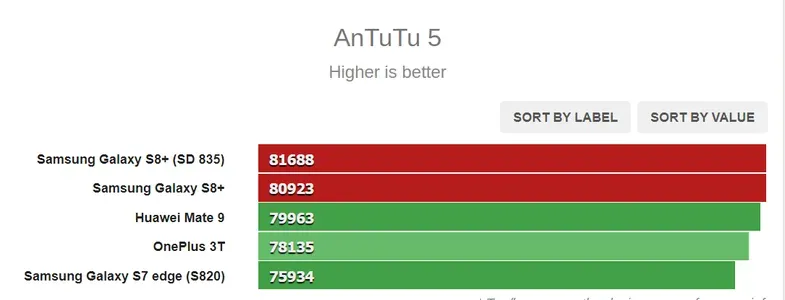
Exynos ruled over the smartphone chipset industry for a long time, but in 2018 Snapdragon finally managed to beat Exynos with its newly designed processor architecture, Kryo 385 used in Snapdragon 845. The new Kryo 385 brings with it an improved battery life, better photography, and advance artificial intelligence.
There isn't much to differentiate between these two in terms of manufacturing. Both made at Samsung foundry using the 10nm FinFet process. Samsung Exynos utilized the third-generation custom cores M3 with Mali-G72 MP18 GPU. Snapdragon 845, meanwhile, introduced the Kryo 385 cores, along with the Adreno 630 GPU.
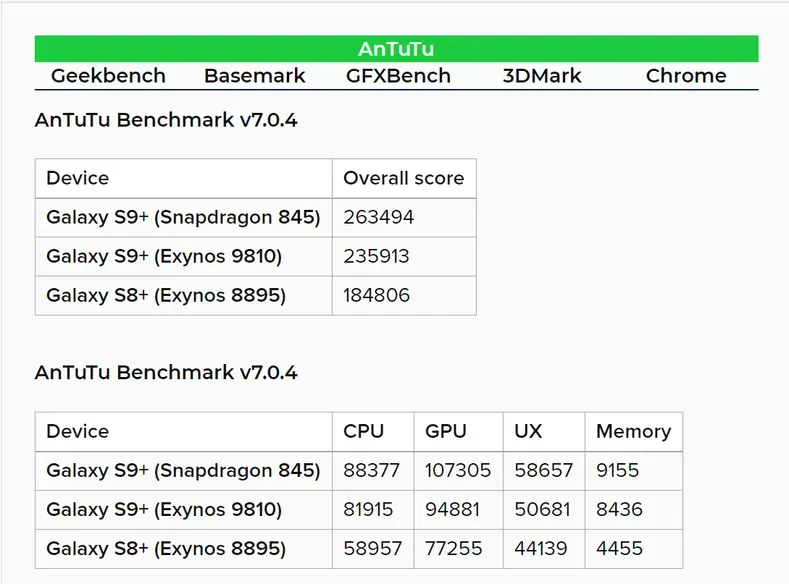
In the performance tests, Snapdragon 845 emerged a clear winner with a good lap, as you can see in the image.
Last year was bizarre for Exynos. Snapdragon 855+ outperformed Samsung's Exynos 9820 in almost every aspect of comparison. Snapdragon features Kryo 485 cores, built on TSMC's 7-nanometer process (1x2.84 GHz Kryo 485 (cortex-A76) & 3x2.42 GHz Kryo 485 (cortex-A76) & 4x1.95 GHz Cortex-A55). Exynos 9820, meanwhile, used the 8-nanometer process by Samsung paired with custom 4th generation mongoose M4 cores (2x2.73 GHz Mongoose M4 & 2x2.31 GHz Cortex-A75 & 4x1.95 GHz Cortex-A55 cores).
As I have stated above, Snapdragon 855 outperformed Exynos 9820 in every aspect, and there is a reason behind it. Exynos 9820 processor comes with the two custom 4th generation mongoose M4 cores, 2 ARM Cortex-A75 cores, and 4 ARM Cortex-A55, while Snapdragon has 4 semi-custom ARM Cortex-A76 cores and 4 ARM Cortex-A55 cores.
Exynos 9820 with Cortex a-75 cores is already a generation behind Snapdragon 855's Cortex A-76 cores.
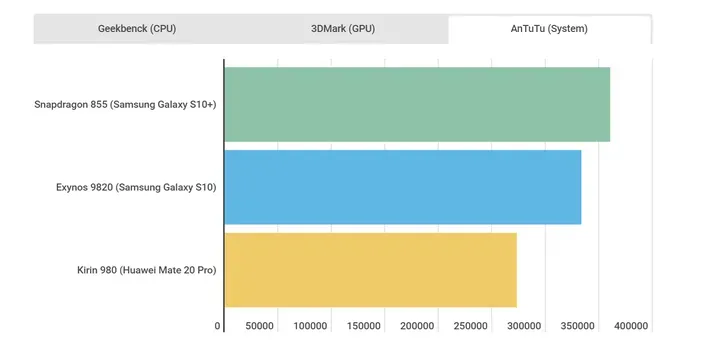
Cortex A76 cores are 35% more powerful than Cortex A75 cores with 40% better battery power efficiency. Moreover, The Cortex A-76 cores clocked at 3GHz are made on 7-nanometer architecture, Cortex A75, meanwhile, clocked at 2.8GHz are made on a 10-nanometer architecture. 3-nanometer architecture difference is a big matter when it comes to efficiency. Cortex A76 is even 30% smaller than Cortex A75.
Exynos outperformed Snapdragon in a single-core test, but in every other test, including multicore performance, Snapdragon out scored Exynos.
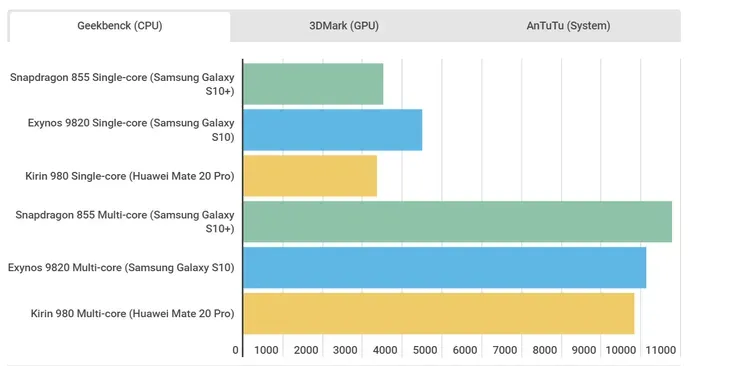
In the 3D benchmark for GPU testing, Snapdragon 855 Adreno 640 GPU completely dwarfed out Exynos 9820 Mali G76 GPU with its performance hitting an 18% higher score.
But, Exynos came with a major drawback that appeared while testing the peak performance of both processors. In the fps test conducted by androidauthority.com, Samsung Exynos showed a 46% drop in fps rate due to thermal throttling.
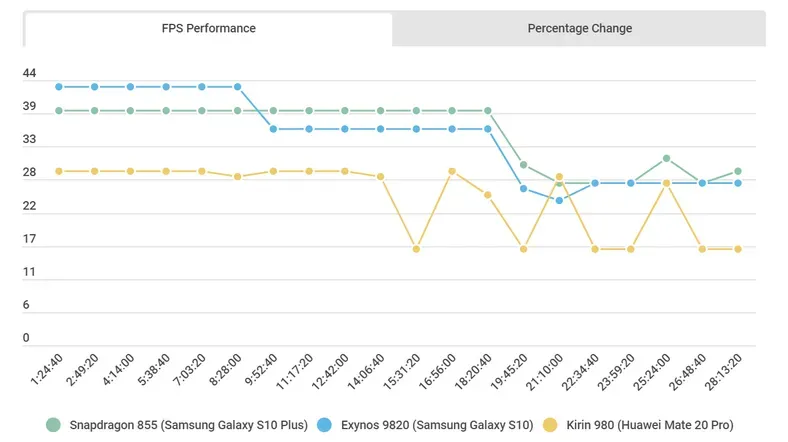
In real life, Exynos powered Samsung S10 tends to heat a lot even while handling lightest of daily tasks. In the benchmark, the Exynos variant was almost 6% hot as compared to Snapdragon at any time.
This year Samsung launched its Exynos 990 Chipset equivalent to the Snapdragon 865 processors for its 2020 Flagships, Samsung Galaxy S20. You can read a detailed comparison between these chipsets in this article. In our case study and test, Snapdragon 865 completely blew away Samsung Exynos 990 Chipset. It was a result of Samsung's poor-performing Exynos and its thermal throttling that Samsung has shipped the least no of S-series smartphones in 2020.
The final news came right after the release of the Samsung Exynos 990, and it makes sense. The original untweaked cores are already performing better than the custom made CPU cores in Samsung Factory.
The current offering from snapdragon is providing better performance at a lower battery consumption, which is one prime factor to consider before buying any smartphone, So Why waste money on Custom core development?
With this, Mongoose M5 came as the last custom CPU from the Samsung factory, to be found in the 2020 Samsung S series smartphone, Samsung S20 series.
With the shutdown of Samsung's custom CPU core department, one big era of the smartphone market has come to an end. But it's not a piece of bad news since, in the gadget market, things are closed for the good. With the closure of the Custom CPU department, Samsung has shaken its hand with the AMD, the largest and most powerful GPU manufacturer of the world. They have already started working together, and the rumors have it, the upcoming Exynos 1000 series will be empowered by an AMD GPU that will give a new height to the smartphone gaming possibilities.

1 year ago

1 year ago
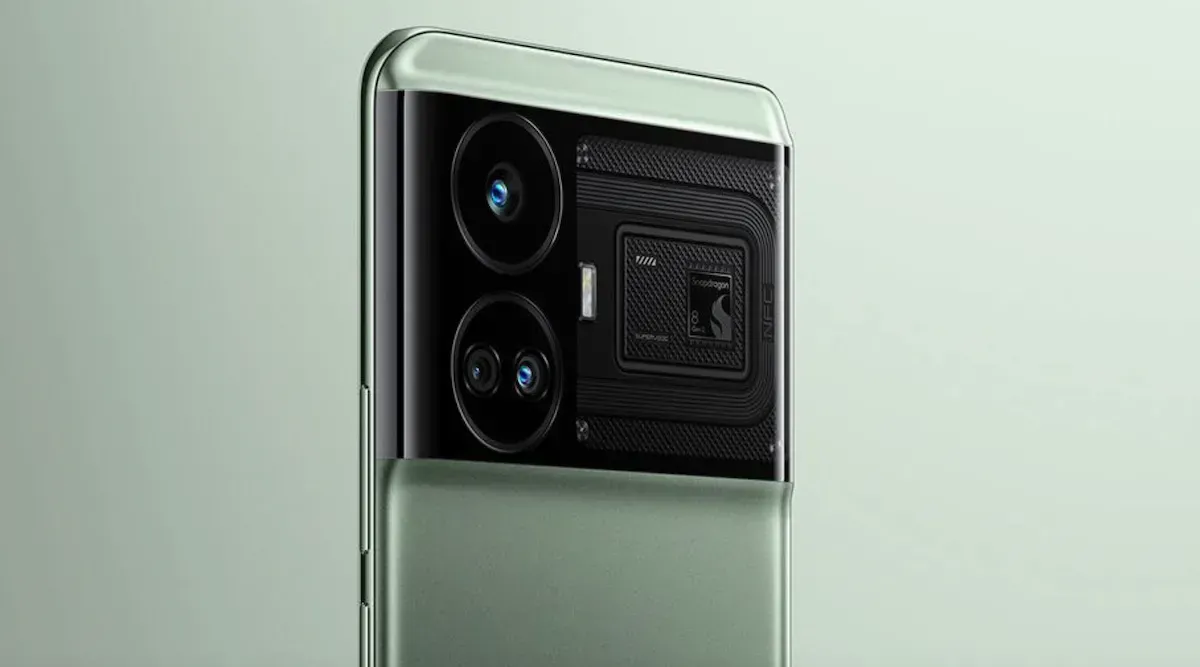
1 year ago